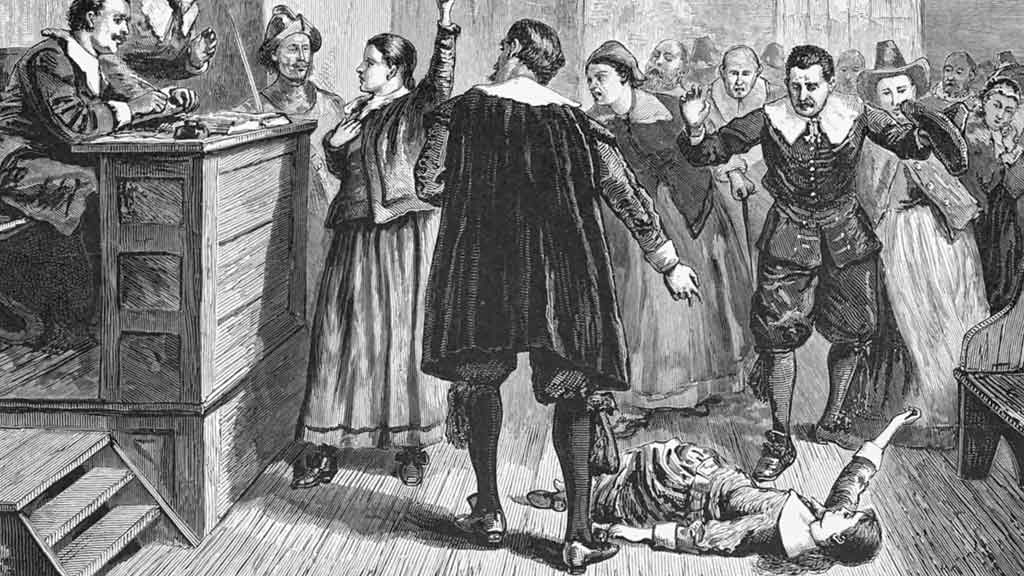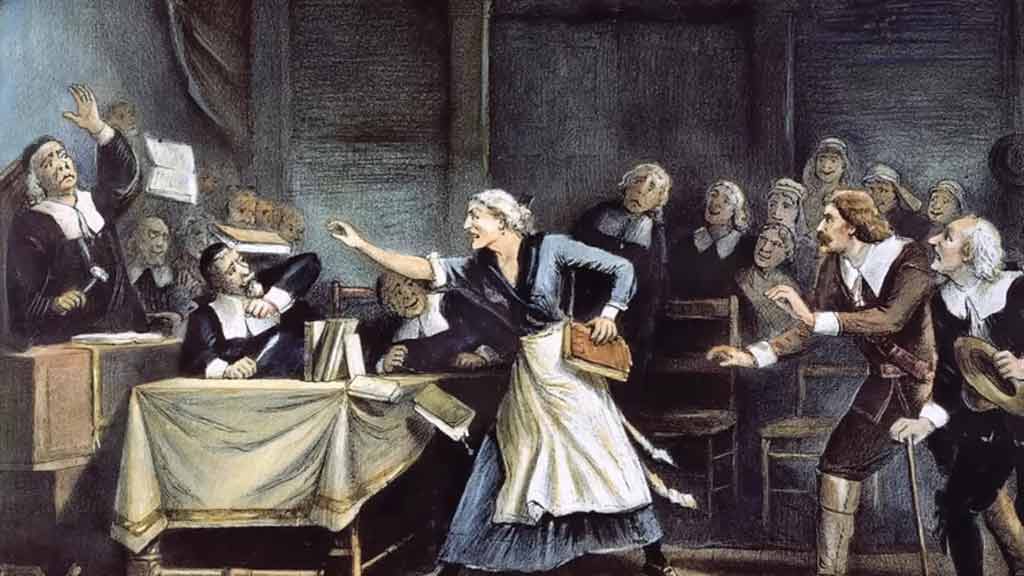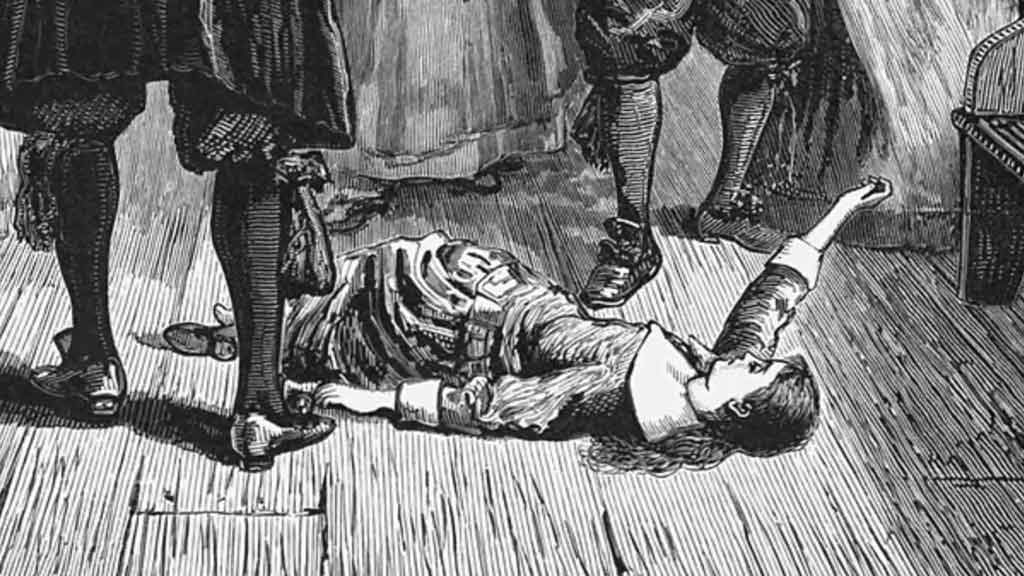Step back in time to the haunting era of the Salem Witchcraft Trials – a dark chapter in American history that continues to captivate minds centuries later.
Delve into the enigmatic world of accusations, fear, and superstition that gripped the early American colonies, leaving a legacy of tragedy and injustice.
The Salem Witchcraft Trials stand as a stark reminder of the dangers of moral panic and mass hysteria, shedding light on the complexities of human nature under duress.
Unravel the intricate web of events that unfolded in 1692, as ordinary individuals were accused, tried, and executed for practicing witchcraft. Explore the historical context of colonial America and the prevailing beliefs that fueled the fervor of the trials.
As you navigate through the accounts of those accused and the legal proceedings that ensued, you’ll gain a deeper understanding of the social dynamics and religious fervor that shaped this tumultuous period in American history.
Overview of the Salem Witch Trials
The infamous Salem Witch Trials of 1692 hold a significant place in American history, marked by accusations, fear, and superstition that plagued the early colonies.
This dark chapter continues to intrigue and haunt the collective memory of the nation, portraying the dire consequences of moral panic and mass hysteria.
Historical Context and Origins
The hysteria that gripped Salem, Massachusetts, in 1692 had its roots intertwined with the broader historical context of colonial America.
The Puritanical beliefs and strict social norms prevalent in the society of the time set the stage for suspicion and paranoia to flourish.
The intricate events leading up to the trials were sparked by the mysterious afflictions experienced by two young girls, leading to a chain of events that spiraled out of control.
Key Figures and Their Roles
Central to the Salem Witch Trials were key figures whose actions and beliefs shaped the outcomes of the trials.
Figures like Reverend Samuel Parris, whose daughter was one of the first to exhibit strange behaviors, played a pivotal role in escalating the accusations of witchcraft.
The involvement of judges, accusers, and the accused left a lasting impact on the community, showcasing the depths of fear and uncertainty that pervaded Salem during this tumultuous period.
The Salem Witch Trials stand as a stark reminder of the fragility of society under the influence of fear and belief, shedding light on the complexities of human nature when faced with suspicion and hysteria.
The Socio-Political Climate of Salem in 1692

In 1692, Salem, Massachusetts, was characterized by a unique socio-political climate deeply rooted in the religious beliefs, cultural norms, and political tensions of colonial New England.
Here’s an overview:
Religious Influences on the Trials
In 1692 Salem, religious beliefs heavily influenced the witchcraft trials. The Puritan community’s deeply ingrained faith in the supernatural and suspicion of anything deemed “unholy” played a significant role.
With Puritanical beliefs dictating every aspect of life, the mere suspicion of witchcraft could lead to dire consequences.
Accusations often stemmed from religious differences, personal vendettas, and societal tensions, illustrating how religious zealotry fueled the trials’ intensity and impact.
Political Instability and Its Impacts
The political climate in Salem during 1692 was marked by uncertainty and turmoil, setting the stage for the witchcraft trials’ escalation.
With the recent revocation of the Massachusetts Bay Colony‘s charter in 1684, the lack of established governance created a sense of legal ambiguity.
The arrival of a new charter and Governor Sir William Phips brought about a shift in power dynamics, leading to the formation of special courts to address the rising witchcraft cases.
The absence of a stable legal framework allowed for the unchecked proliferation of accusations and trials, further exacerbated by the unresolved political tensions within the community.
The combination of religious fervor and political instability created a perfect storm that fueled the Salem witch trials, showcasing how environmental factors can influence historical events and societal outcomes.
Major Events of the Salem Witch Trials

The Salem Witch Trials of 1692 were a series of events that unfolded in Salem, Massachusetts, resulting in the prosecution, imprisonment, and execution of numerous individuals accused of witchcraft.
Here are the major events:
Formal prosecution: The Court of Oyer and Terminer
The Salem Witch Trials saw the establishment of the Court of Oyer and Terminer in May 1692 by Governor Sir William Phips.
This special court was tasked with “hear and determine” the witchcraft cases. This marked a significant shift from pretrial examinations to formal court proceedings, enabling a more structured approach to handling the growing number of accusations.
The Court of Oyer and Terminer played a crucial role in the Salem Witch Trials by providing a formal platform for adjudicating the witchcraft cases, ensuring a systematic and legal process for addressing the escalating accusations with more accountability and transparency.
September 1692
In September 1692, the Salem witchcraft trials reached a fever pitch with a surge in accusations, arrests, and trials. The hysteria and fear gripping the community led to a rapid escalation of proceedings and a high number of executions.
The events of September 1692 are a stark reminder of the intensity and urgency with which the trials unfolded. The trials during September 1692 underscore the gravity of the situation, showcasing a heightened sense of urgency and fear within the community.
This period saw a surge in accusations, arrests, and ultimately, a significant increase in executions.
Superior Court of Judicature, 1693
Following the tragic events of 1692, the establishment of the Superior Court of Judicature in 1693 aimed to bring a sense of order and justice to the aftermath of the Salem Witch Trials.
This court sought to review the cases of those still imprisoned and provide a more thorough and fair examination of the accusations leveled against them.
By prioritizing evidence and ensuring proper legal procedures, the Superior Court of Judicature played a crucial role in rectifying the injustices of the Salem Witch Trials.
Its objective was to meticulously assess remaining cases and deliver impartial verdicts based on verified information.
Initial Accusations and Arrests
The Salem witchcraft trials began with a series of initial accusations and arrests in early 1692. These accusations primarily targeted women, especially those from marginalized groups or with social differences.
The widespread fear and paranoia in the community fueled these initial arrests, setting the stage for the subsequent trials that would grip Salem in a stranglehold of fear and suspicion.
The escalating tensions in Salem led to a snowball effect, with more and more individuals being accused of witchcraft based on flimsy evidence or personal vendettas. This created a climate of fear where no one felt safe from suspicion or false accusations.
Trials and Executions
The trials that ensued during the Salem Witch Trials were marked by a frenzied atmosphere of accusation, testimony, and judgment.
Many accused individuals faced unfair and biased trials where spectral evidence and superstitions played a significant role in determining guilt.
The executions that followed were swift and brutal, with innocent lives lost to the mass hysteria and unfounded allegations that plagued Salem during this dark period.
Legal and Judicial Aspects

The legal and judicial aspects of the Salem Witch Trials were complex and deeply influenced by the religious, social, and political climate of the time.
Here are some key points:
Court Procedures and Evidence Used
During the Salem Witch Trials, the Court of Oyer and Terminer, established in May 1692 by Governor Sir William Phips, played a pivotal role in conducting the trials.
The court proceedings were characterized by the use of spectral evidence, which allowed testimony about dreams and visions, often leading to unfair judgments. The trials were frenzied, with a high conviction rate based on this questionable evidence.
Despite initial cautions against the use of spectral evidence, the courts proceeded with these flawed procedures, resulting in swift and brutal executions of many accused individuals.
Aftermath and Reversal of Convictions
Following the chaos of the trials, the aftermath saw a shift towards rectifying the unjust convictions. In 1693, the establishment of the Superior Court of Judicature aimed to bring order and justice after the reckless trials.
There were efforts to reverse some of the convictions, especially those based on unreliable evidence. A group of clergymen expressed dissatisfaction with the proceedings, highlighting the injustices suffered by the accused.
Despite these appeals for fairness, the trials left a dark stain on Salem’s history, emphasizing the need for proper legal procedures and safeguarding against mass hysteria and injustice.
Legacy of the Salem Witch Trials
The Salem Witch Trials left a profound and lasting legacy that continues to shape perceptions of justice, religion, and society.
Here are some aspects of their legacy:
Cultural Impact and Historical Interpretation
The legacy of the Salem Witch Trials has reverberated through American history, leaving a lasting impact on cultural narratives and historical perspectives.
The events of 1692 have been extensively studied, serving as a cautionary tale against mass hysteria, unjust convictions, and the manipulation of legal proceedings for political or personal gain.
Cultural Impact: The Salem Witch Trials have captured the imagination of writers, artists, and scholars, inspiring numerous literary and artistic works that seek to reinterpret and understand the complex dynamics at play during those turbulent times.
From Nathaniel Hawthorne’s “The House of the Seven Gables” to Arthur Miller’s play “The Crucible,” the trials have been a fertile ground for exploring themes of fear, manipulation, and the consequences of unchecked power.
Historical Interpretation: Scholars and historians continue to analyze the Salem Witch Trials within the broader context of colonial America, examining how religious beliefs, social hierarchies, and political tensions converged to fuel the witch hunts.
The trials are seen as a stark reminder of the dangers of conformity, prejudice, and the erosion of due process in times of crisis.
Frequently Asked Questions
Why did the Salem witch trials end?
Governor William Phips ended the special witchcraft court in October 1692, leading to a decline in accusations and trials. The newly established Superior Court of Judicature further cleared remaining cases, bringing an end to the prosecutions. After the Salem trials, no one was convicted of witchcraft in New England.
How many people were executed during the Salem witch trials?
A total of 19 individuals were hanged, one was pressed to death, and five died in jail during the Salem witch trials in 1692.
Who played a significant role in instigating the Salem witch trials?
Thomas Putnam, a prominent and wealthy resident of Salem, was a key figure in seeking warrants against accused witches. His influence and involvement were instrumental in driving the trials forward.
What defined someone as a witch in Salem?
In Salem, the Puritans attributed physical phenomena to spiritual causes. If individuals claimed to have witnessed spirits in the form of the accused, they were deemed witches by the community.
What happened to the girls involved in the Salem witch trials after the events?
Following the Salem witch trials, most of the accusers went on to lead ordinary lives. Accusers like Betty Parris, Elizabeth Booth, Sarah Churchill, Mary Walcott, and Mercy Lewis married and started families.
Conclusion
Reflecting on the Salem Witch Trials history, you grasp the intricate interplay of religion, politics, and fear that fueled this dark chapter.
The establishment of the courts and subsequent executions underscore the devastating consequences of mass hysteria.
The legacy of the trials, immortalized in literature and art, serves as a poignant reminder of the perils of unchecked prejudice.
By examining this historical event, you gain insight into the importance of upholding justice, protecting individual rights, and learning from past injustices to shape a fairer society.
The Salem Witch Trials stand as a cautionary tale, urging us to remain vigilant against the dangers of conformity and the erosion of fundamental freedoms.
Jaclyn Lowe